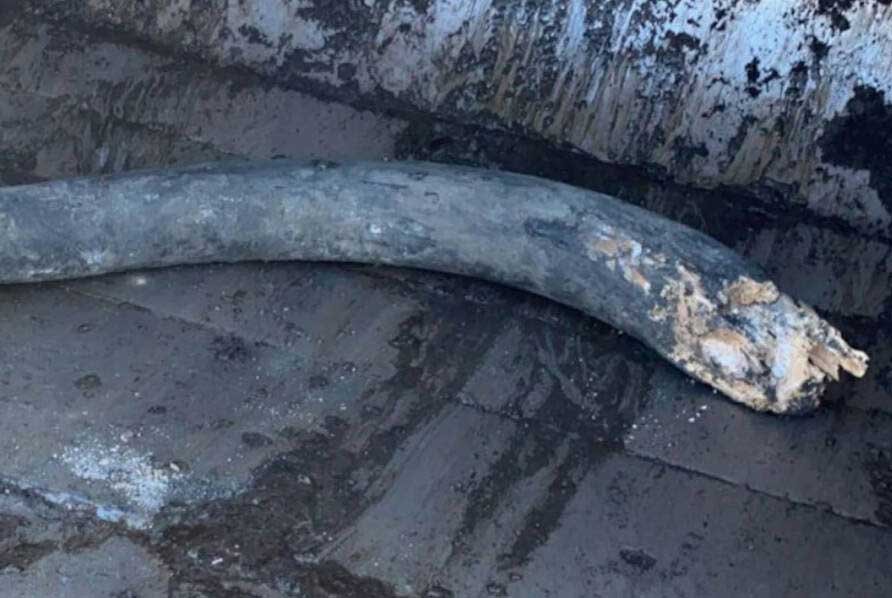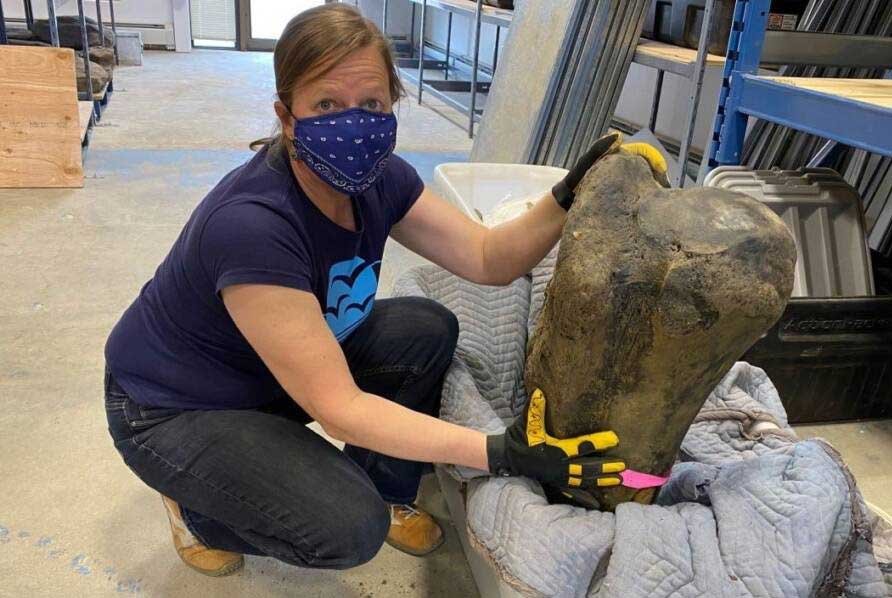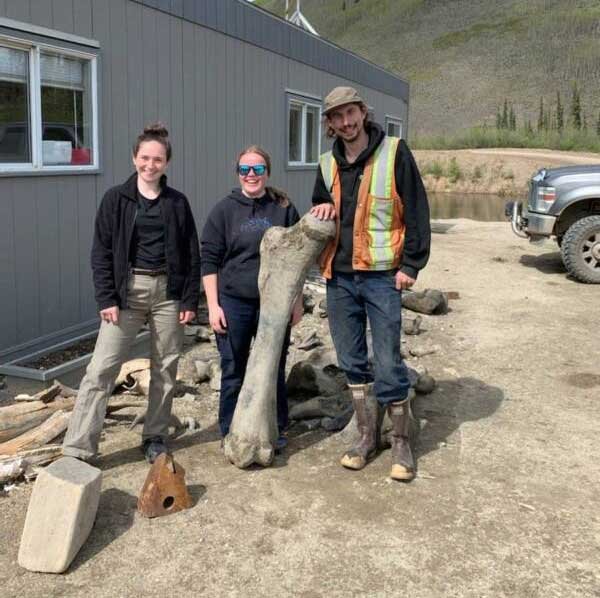The fossils belonged to three woolly mammoths who lived approximately 30,000 years ago. They were most likely from the same family.

A group of miners discovered three partial skeletons of three woolly mammoths that may have belonged to the same family at Little Mine near Dawson City, Yukon, Canada.
Trey Charlie, one of the coworkers who discovered the remains, stated that their group was astounded by the size and weight of the mammoth tusk. “Probably one of the best days I’ve had working,” he told Canada’s CBC, adding, “Throughout the day I was picking bones.” Ribs, teeth, and all sorts of other things.”
The miners had not found gold, but they had discovered a trove of woolly mammoth bones. When another pile of bones was scooped up by an excavator, the miners began digging through the dirt.

Charlie and a coworker were moving mud at the mine site with excavators about two weeks ago when they discovered a tusk.
“I was picking bones all day,” Charlie explained. “Ribs, teeth, and all sorts of things.”
They handed the bones over to the Yukon government. “We appear to have one large full-grown mammoth, one younger adult, and one juvenile,” said Grant Zazula, the Yukon government’s chief paleontologist.
Another scoop with the excavator resulted in “bones falling out of the bucket,” according to Charlie. That’s when the crew decided to take a break and look for more.
Some of the bones are still articulated (connected) to each other, according to Zazula in an email to Live Science. The manner in which the bones were discovered suggests that “these three mammoths were probably living together and died together very close to where the fossil bones were found,” according to Zazula. He speculated that even if they weren’t family members, they could have been part of a larger herd.

Zazula believes the mammoths belonged to the same family, or at the very least the same herd. “You never find a complete skeleton, so finding two partial skeletons indicates that they most likely died together,” he explained. “That is extremely exciting. It can raise a slew of questions.”
Because the miners discovered the bones near a layer of volcanic tephra — rock fragments ejected by an eruption — Zazula believes the mammoths are around the same age.
“We seem to have one large full-grown mammoth, one younger adult and one juvenile”, said Grant Zazula, the head of paleontologist for the Yukon government.
That corresponds to what scientists know about woolly mammoths. The enormous beasts are thought to have roamed northern swaths of present-day Canada 30,000 to 40,000 years ago.
It’s not the first time mammoth skeletons have been discovered in Yukon. Hawk Mining Ltd. miners in the Klondike gold fields discovered a complete mammoth skull more than a meter long in 2010.
It was discovered by a night-shift employee digging into the mud with an excavator and carefully digging around it.
According to Grant Zazula, a Yukon government paleontologist at the time, woolly mammoth remains are discovered “all the time… but never a complete skull.”

According to Canadian Geographic magazine, mammoths roamed northern sections of Canada 30,000 or 40,000 years ago, but were eventually wiped out by a combination of environmental factors and human hunting around 10,000 years ago.
Glen MacDonald, a geography professor at UCLA, told the magazine in 2013: “It was previously assumed that they truly adapted to the ice age. Now, we’re discovering that this isn’t always the case, particularly for northern populations in places like the Yukon and Alaska.”
Mammoth fossils are not only found in North America. Archaeologists discovered the bones of approximately 60 mammoths at an airport construction site near Mexico City just last year.
The bones were discovered over a six-month period at a rate of about ten mammoths per month. “There are too many, hundreds,” said Pedro Sánchez Nava, an archaeologist at Mexico’s National Institute of Anthropology and History.
For more than a century — essentially, since the Klondike Gold Rush — placer miners in central Yukon have been digging up ice age mammal skulls, bones, tusks, and fossils.











